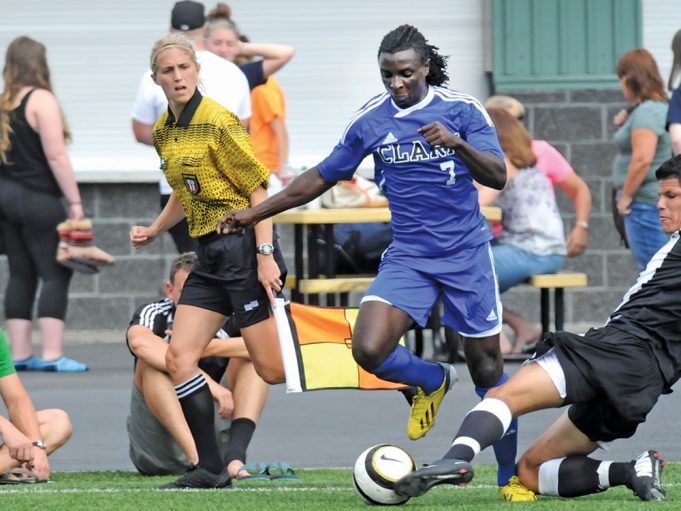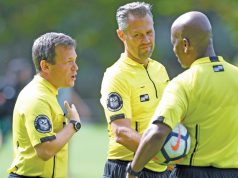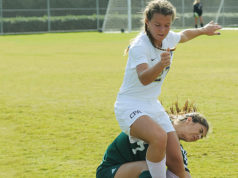There seems to have grown a notion that the Laws of the Game forgives almost anything if you just get the ball.
Not surprisingly, there are many players, coaches and perhaps spectators as well who had read just enough of the Laws of the Game, long enough ago, to have acquired this excuse. Unfortunately, they misunderstood the language in Law 12 which first appeared in 1995 as one of several offenses considered to be a direct free kick foul: A player … (g) when tackling an opponent makes contact with the opponent before contact is made with the ball.
And there it stayed until it was dropped entirely in 2008-09. Arguably, one of the reasons it was dropped was because it was so often mistakenly given as an excuse for committing mayhem during or after making contact with the ball! What replaced it was a general prohibition of any tackle committed carelessly, recklessly or with excessive force. Clearly, making contact with an opponent before making contact with the ball was intended to fall under one of (or, more correctly, any one of) these three categories.
Part of the problem is that “tackling” is, like “charging,” an integral, ordinary and usually entirely legal part of the game. U.S. Soccer’s referee training program adjusted accordingly to identify characteristics of a tackle which should be considered in deciding the line where a legal tackle begins edging into a foul. In a 2011 memorandum, USSF stated:
- Getting the ball first does not make a tackle legal.
- Not getting the ball first does make the tackle illegal.
- Getting the ball first but following through with the rest of the body in a careless or reckless manner or using excessive force does make the tackle illegal.
- “Getting the ball” cannot be used as an excuse for committing a tackle which is out of control.
More specifically, and this remains guidance to be followed today, the referee should note the following elements in making a decision. The speed of the tackler can be relevant if it is beyond the general speed of play or if the speed becomes an indicator of the tackler being “out of control.”
The direction of the tackle issue has now settled into a comfortable approach that does not automatically label as unsafe a tackle performed from behind, but tackles from behind do raise a greater level of concern when the circumstances result in the tackled opponent being unaware of and thus unable to defend against the contact. (“Behind” includes any direction which would not ordinarily be visible to the opponent.)
The height at which the tackler’s foot (either one) makes contact with the opponent’s body — before, during or after contact with the ball — is not only an element of the foul itself but also of any misconduct (caution or red card) by the perpetrator. Similarly, any contact with an opponent with studs exposed should be considered not only an element of the foul decision but an almost certain indication of excessive force.
The more of these elements present in any given tackle (including but not limited to making contact with the opponent before making contact with the ball), the more likely there should be a whistle for a foul, the less likely advantage should be applied, and the more likely a send-off should accompany the decision.
What's Your Call? Leave a Comment:
Note: This article is archival in nature. Rules, interpretations, mechanics, philosophies and other information may or may not be correct for the current year.
This article is the copyright of ©Referee Enterprises, Inc., and may not be republished in whole or in part online, in print or in any capacity without expressed written permission from Referee. The article is made available for educational use by individuals.

















